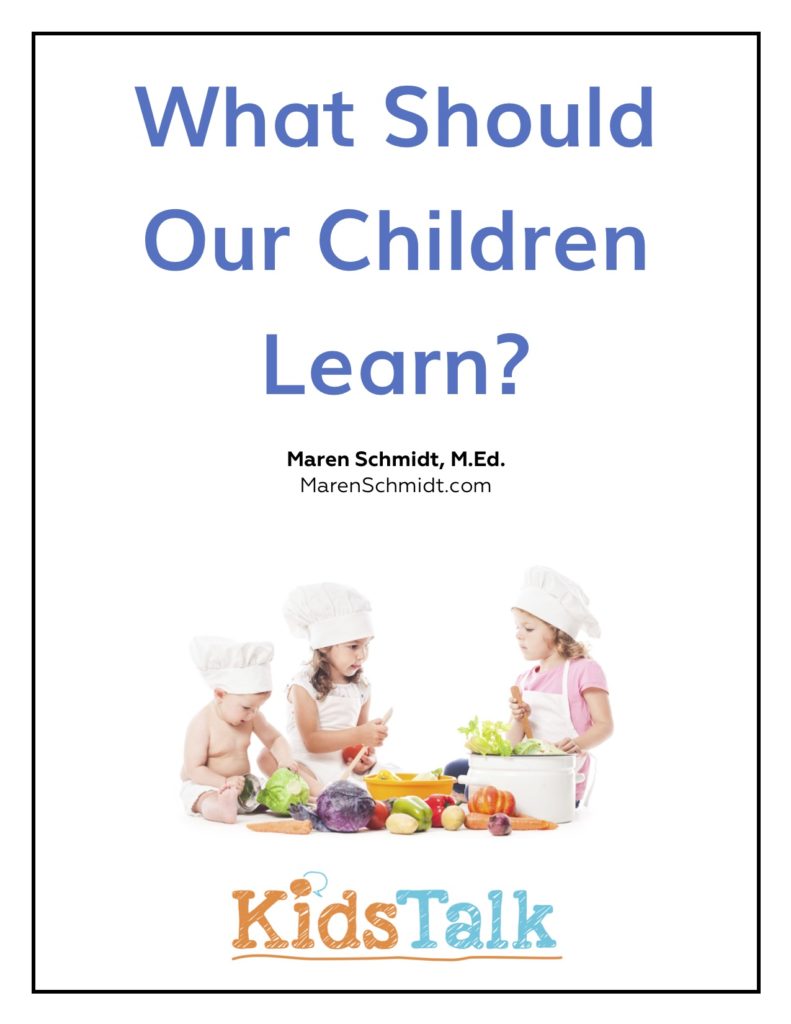
Trying to keep our children frustration free by controlling the consequences of movement–for example using spill proof drinking cups instead of ones that can spill–prevents our children from getting necessary and accurate feedback for optimal learning.
When we can prepare a child’s indoor and outdoor spaces with a variety of activities that match skill and will–meaning we offer appropriate challenges–we also create a place where a child is eager to try new pursuits, as well as repeat familiar activities in order to absorb the skill.
For example, we don’t hand a 3-year-old a copy of Tom Sawyer and expect him to read it.
Yes, we want the child at some point, perhaps by age 10, to have the skills to read at that level.
Spoken language is a key to being a successful reader. We keep language in the air by reading aloud everyday. We involve our children in conversation, as well as limiting or eliminating television and video game time.
With the goal of literacy, we teach our three-year-old the sounds of the alphabet, and later introduce the shapes of the letters with their corresponding sounds, one by one.
Next, we show how to spell a word by sounding it out and writing the word with loose letters organized in a box.
In isolation from a book, we introduce short words on cards, such as “cat”.
Next we introduce cards with two words at time, “big cat”, followed over the course of weeks by three word exercises, such, as “big yellow cat”, then on to sentences, “The big yellow cat ran.” These exercises are placed in baskets and left on a shelf in order that the child can choose to repeat when he so desires.
Slowly, the eye and the mind are trained to start at the left hand side and move to the right in order to decode the symbols.
Instead of asking the child to read out loud, we ask him to act out a collection of sentences written on paper strips and placed in a basket, an activity he can do anytime independently without adult interaction. When we see that he is acting out the sentences accurately, the child is introduced to longer sentences or two sentences on a page, “The big yellow cat ran after the brown-spotted dog.”
As the child becomes more familiar with the words, he begins to memorize that certain combinations make certain words, and doesn’t need to decode each sound for each word. Reading becomes faster and more fluid.
As each stage of learning to read is met with a favorable outcome the child experiences a success cycle, where learning creates a desire for more learning.
All these steps describe an indirect preparation for learning to read a book like Tom Sawyer.
If we want to help a child love to learn, we prepare him indirectly for the next step of accomplishment in such a way as to assure success.
We then allow the child to take the step independently.
By creating a place where a child can choose activities that create the next step in a continuum of learning through indirect preparation, we help a child love to learn.
By making the tasks neither too easy nor too hard—by creating a Goldilocks’ spot of “just the right” task—we provide the nourishment for a lifetime of loving to learn.
Begin with the end in mind. Start giving lessons where the child is at the edge of his skill level by giving an adequate challenge, and prepare for the next step as the young child repeats various activities to gain competency.
Using indirect preparation is a key teaching skill to help children love to learn.
It makes learning, as Goldilocks would say, “Just right!”
Sign up below for your free guide, What Should Our Children Learn?


One Response to “Learning To Love To Learn”